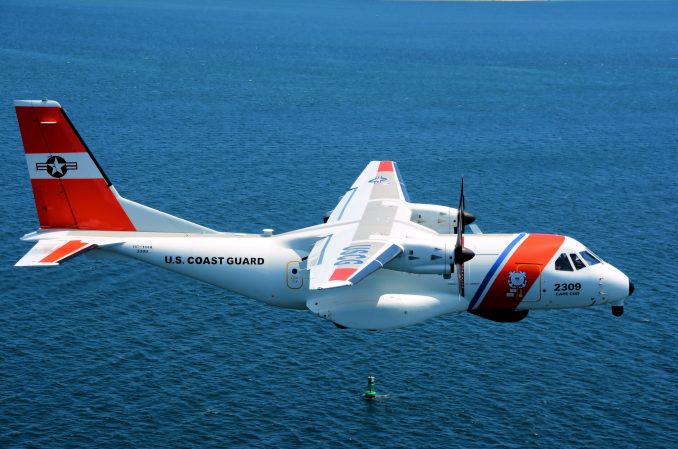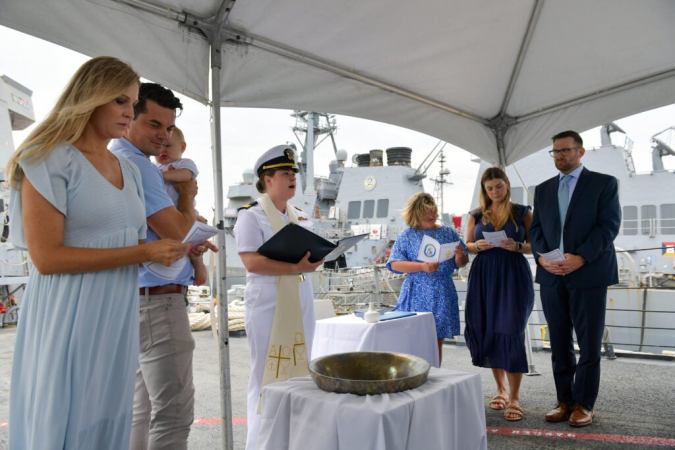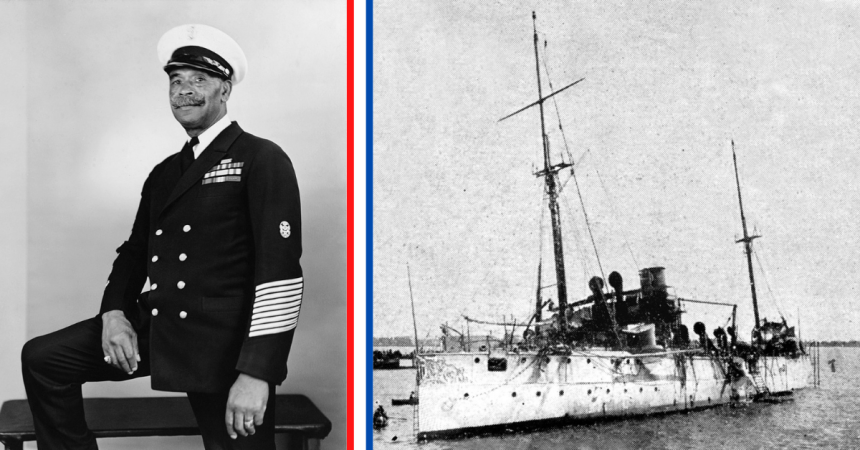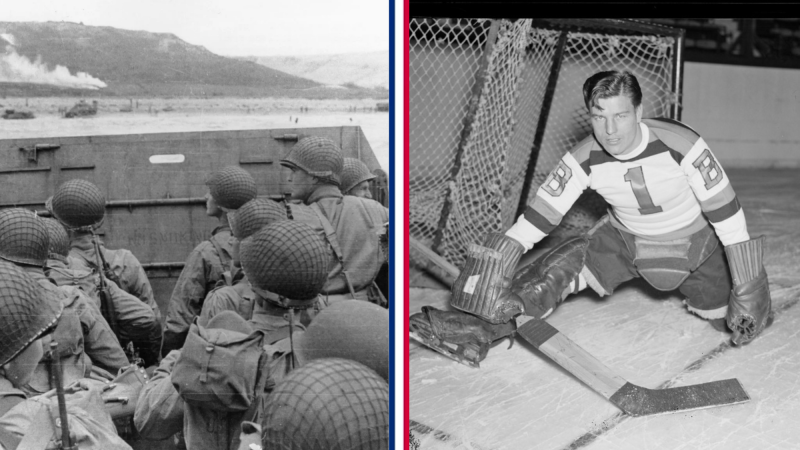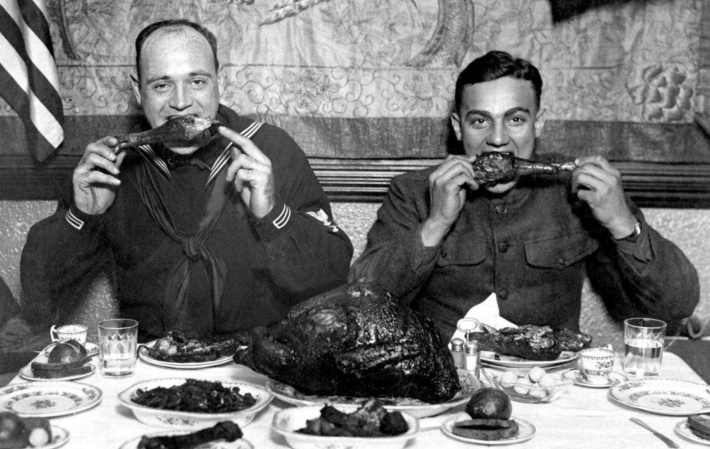The Coast Guard is typically more worried about life jackets than L-shaped ambushes, so they often get a reputation for being bad-ss free, but it’s actually not true.
A bunch of the oft-mocked “puddle pirates” are actually tough as nails. Here are six Coasties from history who weren’t afraid to put life and limb on the line so that others may live:
6. A rescue swimmer personally saved half a crew in the middle of a hurricane

When the HMS Bounty, a replica ship based on a 1780s design, sailed into the Atlantic ahead of Hurricane Sandy in 2012, it was pretty much doomed. Few people on the crew of 15 had any real experience on tall ships and the captain failed to account for how much damage high winds could do to his wooden masts and hull.
So the Coast Guard had to attempt a rescue in severe conditions. Petty Officer Third Class Daniel J. Todd, a rescue swimmer, dove into the waters and braved 30-foot waves for an hour to rescue nine crew members, many of them one at a time.
Five other members of the Bounty crew were rescued by other helicopters. The captain and one crew member died.
5. A pilot twice braved volatile ice to pull out stranded allies

Coast Guard Lt. John A . Pritchard was assigned to duties on the USCGC Northland in 1942 when the ship was operating near the Greenland Ice Cap.
On Nov. 23, he led a motorboat crew through the ice, under a shelf liable to collapse at any moment, onto the shore, and across a dangerous glacier in the middle of the night to rescue three Canadian airmen. He would posthumously receive the Navy and Marine Corps Medal for his actions.
Later that same month, he flew onto the ice cap to rescue downed American airmen. On Nov. 28, he landed on the ice and then took off with two Army fliers, saving them both.
He returned the next day and picked up a third flier but never made it back to his ship. He received the Distinguished Flying Cross posthumously for his November 28-29 actions.
4. The crew of the USCGC Campbell, which rammed a German submarine

On Feb. 22, 1943, the USCGC Campbell was escorting other ships when a German submarine suddenly appeared in the ocean nearby. The Campbell immediately turned towards the enemy craft and rammed it, damaging both vessels but failing to sink the enemy sub.
Despite a large hole in the Campbell’s side, it stayed in the fight and engaged the sub with direct fire and depth charges, eventually destroying the enemy. The Campbell took a few prisoners on board, but its commander, Commander James Hirshfield, had been wounded by shell shrapnel.
Hirshfield remained in command and had the Campbell brought into port for repairs.
3. The coxswain who navigated an exploding ship to rescue survivors

When the USNS Potomac caught fire in 1961 while discharging aviation fuel, the sea quickly became a hellscape. Explosions on the ship repeatedly sent shrapnel across the surface of the water and burning fuel heated the surrounding air and filled it with noxious gasses.
Coast Guard Boatswain’s Mate First Class Howard R. Jones piloted a lifeboat under the stern of the Potomac and rescued five crew members. He delivered those to a nearby hospital and then returned to the still-burning vessel where he searched for other survivors, finding another missing crew member.
The reserves of fuel on the ship kept it burning for five days before it sank.
2. Three Coasties volunteer to rescue over 30 survivors in a horrendous storm

The Coast Guard often refers to the events of Feb. 18, 1952, as their “Finest Hours,” and a movie based on the events came out in 2016. Two 520-foot ships, the Fort Mercer and the Pendleton, broke apart in a massive nor’easter. The Pendleton broke first, but a short circuit stopped it from reporting the damage.
The Fort Mercer crew was rescued and the crews finally spotted the beleaguered Pendleton. A crew of four volunteers motored past the sandbars off Massachusetts and made it to the bow section of the Pendleton.
1. Two signalmen save Marines under fire at Guadalcanal

Chief Signalman Raymond Evans and Signalman First Class Douglas Munro were attached to the 1st Marine Division in 1942 when they were sent to Guadalcanal as part of the invasion. The two men were there on different missions, but both were asked to pilot boats to land Marines on another part of the island.
The initial landings were uneventful, but soon after the Coasties returned, they heard that the Marines were under heavy fire and were signaling for help. They both volunteered to return in Higgins boats, a few panels of slapped together plywood filled with gasoline and ammunition, and rescue the Marines.
They even volunteered for service in the boat designated to draw Japanese fire.
Miraculously, the Coasties were able to suppress many of the Japanese guns as the Marine withdrew to the boats, but Munro was tragically hit in the head by a Japanese machine gun burst while helping a beached craft en route back to the beach.
He survived just long enough to famously ask, “Did the Marines get off?” before succumbing to his wounds.




